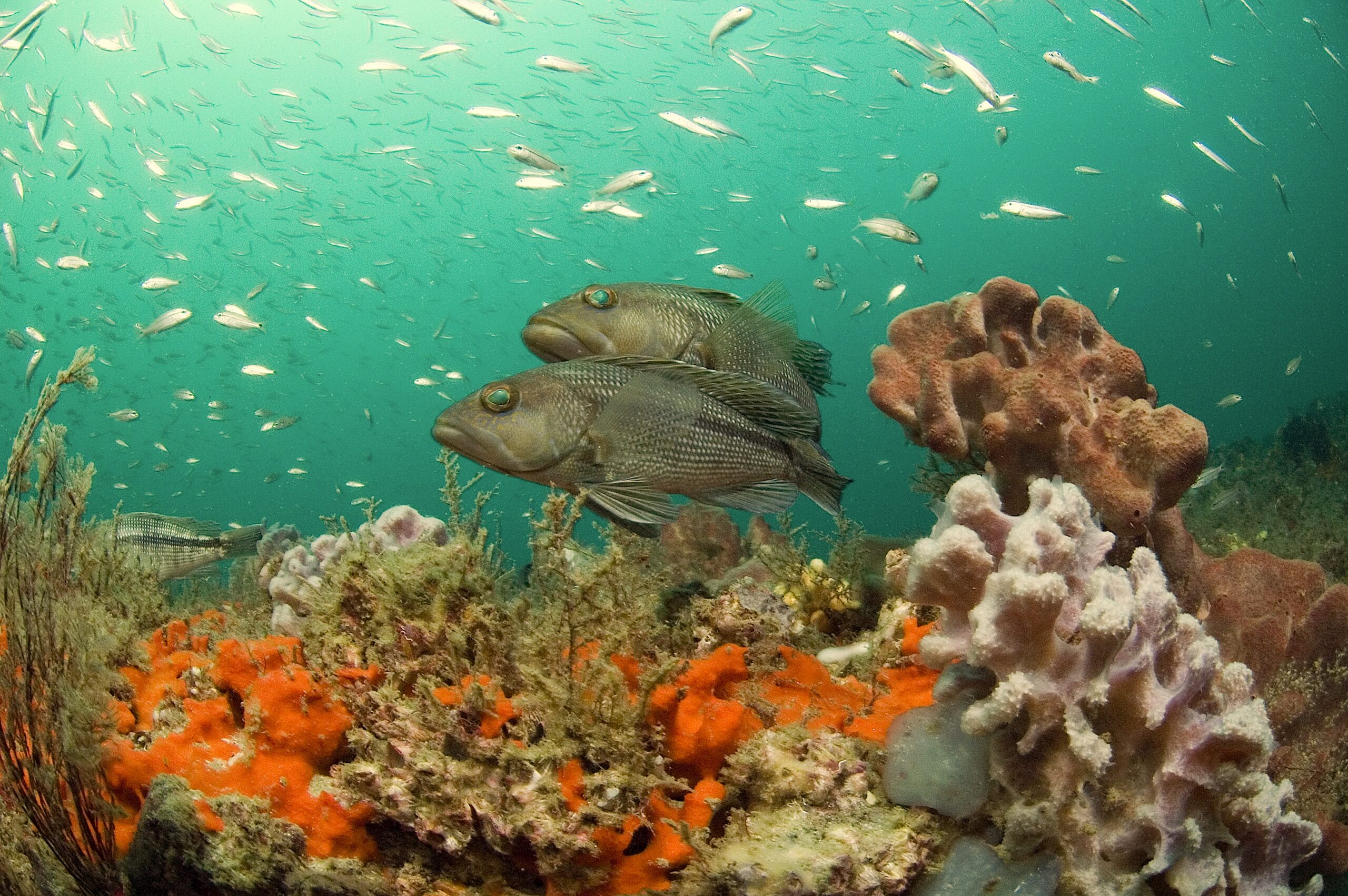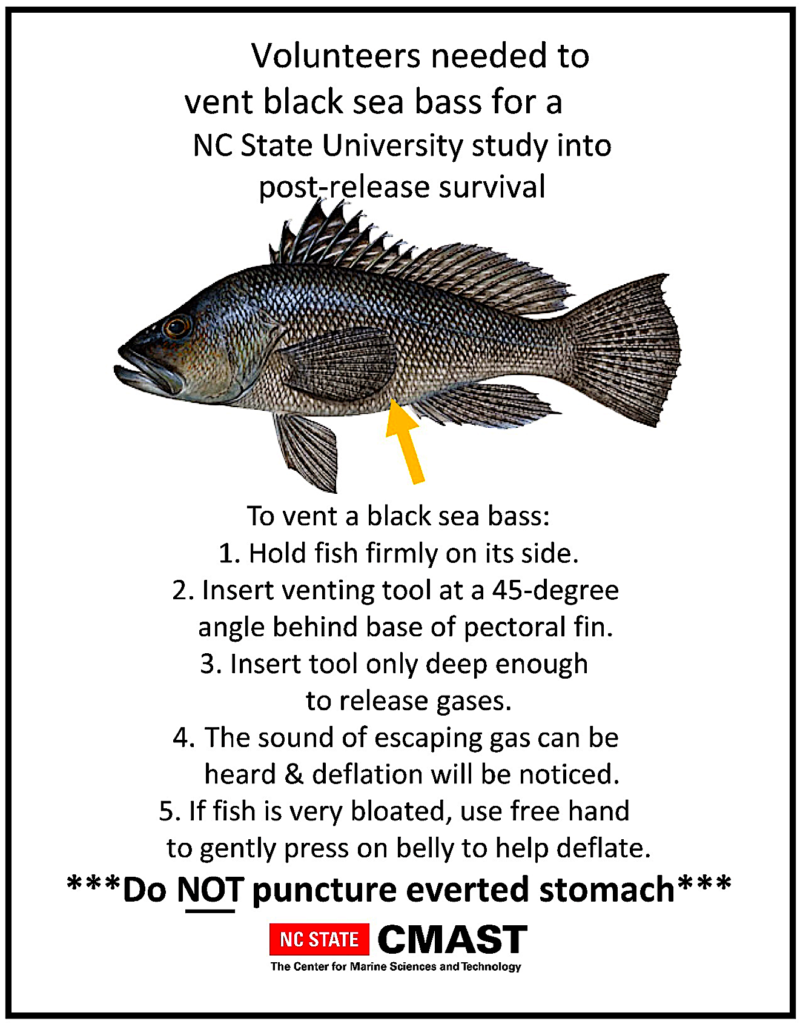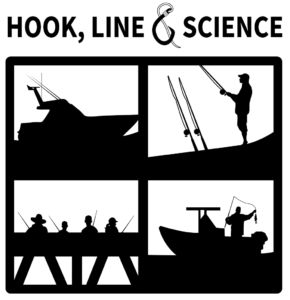How to Increase the Survival Rate for Black Sea Bass After Release

Fish often sustain injuries when captured from deep waters, jeopardizing their survival.
Research Need
When anglers reel up fish, like black sea bass, from deep waters, the fish can have trouble adjusting to the sudden change in pressure. Gases inside their bodies expand, leading to injuries that affect survival. Anglers may notice fish floating on their sides, stomachs poking out of the fish’s mouth, bulging eyes, flared gills, and inflated bodies.
Researchers have studied ways to help these fish survive — including venting (releasing trapped gases from the swim bladder, often with a needle) and recompression (lowering the fish to a specific depth with a special tool). However, the effectiveness of venting and recompression across different water depths remains unclear.
In the U.S. South Atlantic, managers currently prefer recompression over venting, in part due to previous research. Current regulations require fishers have rigged and ready-to-use recompression devices on board their vessels when targeting or in possession of snapper-grouper species.
This study sought to answer two main questions: How well do venting and recompression work at various depths? And how much knowledge about the methods is necessary to use them effectively?
What did they study?
Over the course of seven years, researchers went on 81 fishing trips to continental shelf waters off North Carolina, focusing on areas with black sea bass populations. Anglers release about 90% of the black sea bass they catch in U.S. South Atlantic federal waters, making it a good species to study.
The team fished at three different depths: 80−85 feet, 95−105 feet, and 115−125 feet. They used standard recreational fishing gear, including commercially available venting and recompression devices: the Angler’s Choice FVT-001 Fish Venting Tool for venting and the SeaQualizer and Blacktip tools for recompression.
Researchers also identified anglers who had never heard of or used the venting method and gave them a flier explaining how to vent black sea bass.
The team tagged black sea bass as angler-vented, researcher-vented, recompressed, or untreated controls. They recaptured tagged fish on subsequent research trips and received reports on tagged fish from commercial fishers and recreational anglers.

What did they find?
Venting and recompression increased survival rates by about 6.8% and 8.1% respectively at the deepest range (115−125 feet). The methods had no significant impact at shallower depths.
Vented fish were better able to swim below surface in all but the shallowest waters. Across all depths, researchers recaptured a higher number of recompressed fish compared to untreated fish.
Anglers new to venting achieved similar survival rates in vented fish as the more-experienced research team. Additionally, scientists didn’t see any signs of infection at the puncture sites in recaptured fish.
Anything else?
Several factors can affect how well venting works for different fish species. For example, the authors suggest that anglers might need to apply manual pressure with the needle to vent bigger fish like red snapper.
For smaller fish like black sea bass, this pressure usually isn’t necessary. You can often see that venting is working and gases are releasing because their body size decreases by about 25%. A similar venting and recompression comparison study with other reef species, like red snapper, would be beneficial.
So what?
Anglers can use venting and recompression to increase the chances of survival for fish released back into deep waters — and this research suggests that with further education and outreach, more anglers can use these methods.
While a 6.8% and 8.1% increase in survival rates might seem modest, given the vast quantity of black sea basses released each year, even a small increase in the rates represents a significant number of surviving fish.
Reading
Rudershausen, P. J., Schmidt, H. M., Merrell, J. H., Runde, B. J., & Buckel, J. A. (2023). Effectiveness of Venting and Recompression for Increasing Postrelease Survival of Barotraumatized Black Sea Bass across a Range of Depths. North American Journal of Fisheries Management, 43, 257-267.
By Maya Afilalo.
The text from Hook, Line & Science is available to reprint and republish at no cost, but only in its entirety and with this attribution: Hook, Line & Science, courtesy of Scott Baker and Sara Mirabilio, North Carolina Sea Grant.




